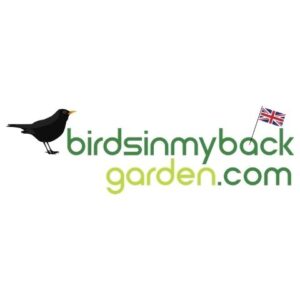Thrushes are beautiful birds that are also helpful when they choose to visit our gardens. It is much nicer to rely on local birds to deal with slugs and snails than to use chemicals. You may even have seen one of these speckled birds thrashing a snail against a stone. But, which thrush was it? Two main thrush species visit our gardens in the UK, alongside a series of related cousins. One is the Song Thrush and the other is the Mistle Thrush. You may see both in your garden or local park and the more visits you get, the better. So, what is the difference between Song Thrush and Mistle Thrush?
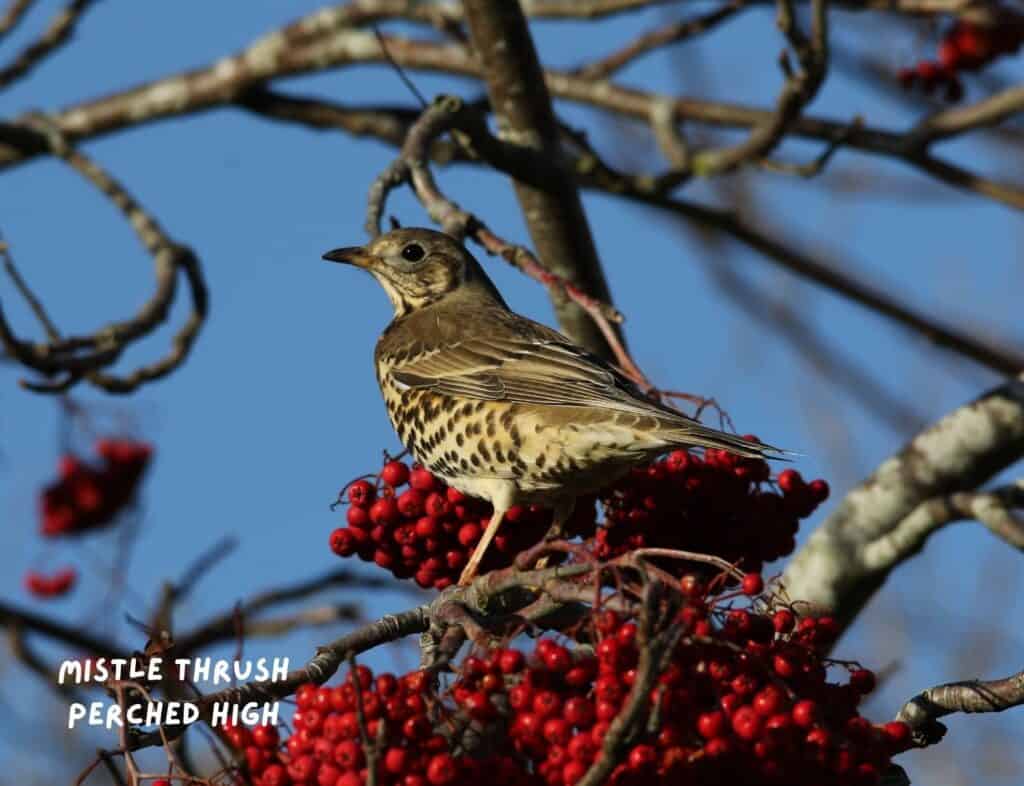
As a general rule, Song Thrush and Mistle Thrush are similar in size, shape with similar plumage. However, the Mistle Thrush is slightly larger of the two species. The Song Thrush has smaller speckles on its front compared to the Mistle Trush along with a creamy-white front with bold streaks of black and warm brown on its back. Most Mistle Thrush will have paler plumage with head and back feathers along with whitish edges on its tail.
But despite the visual differences, there are also behavioural differences that can be extremely helpful in identifying the birds. So keep reading and I will explain everything you need to know!
At first, you might think that these two birds are incredibly similar and impossible to tell apart. If you catch a brief glimpse of one in the countryside, then you may not be able to identify it with 100% certainty. What we presume to be a Song Thrush could be something else, perhaps even something rarer than a Mistle Thrush. So, it helps to know more about the different features.
Luckily, there are a few different identifying factors that you can use to tell these birds apart. They include the bird’s appearance, their behaviour around other birds, their feeding habits, and their calls. The latter may not be that easy to pick up, but you can learn a lot by observing these birds more closely.
Both Thrush Look Similar, But There Are Differences
Let’s start with the way these birds look. It is easy to confuse the two because they are similar in size and shape with similar plumage. The legs and bills are pretty much the same because of their family. However, the Mistle Thrush is the larger of the two. If you were to get a Mistle Thrush, Blackbird, and Song Thrush in a line, they would be in order from largest to smallest.
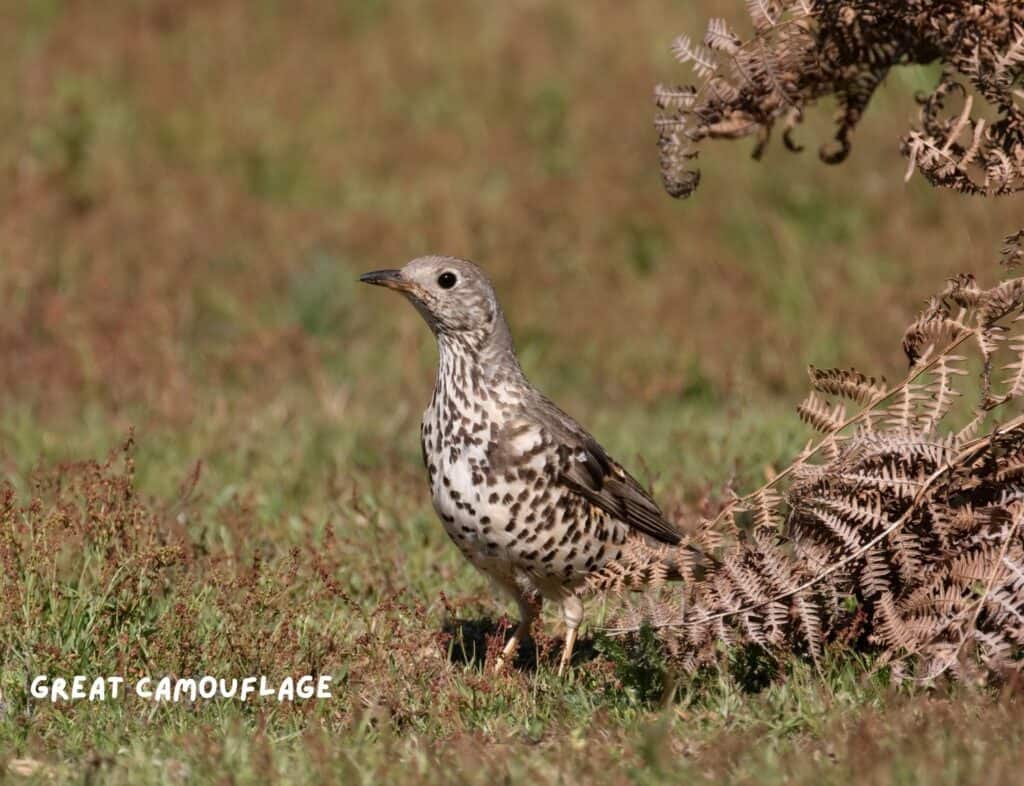
The Song Thrush is a pretty bird, despite mainly being brown. It has a speckled front with bold streaks of black. The front is more of a creamy white and there is a warm brown on the back. Most Mistle thrushes will have paler plumage, although a similarly speckled front.
| Mistle Thrush | Measurement |
| Length | 27cm |
| WingSpan | 42-48cm |
| Weight | 100-150g |
| Song Thrush | Measurement |
| Length | 23cm |
| WingSpan | 33-36cm |
| Weight | 65-100g |
You may notice the head and back feathers are a little more blue-grey in tone. But, you need to have a good view to spot this trait. Also, remember that juvenile thrushes will look a bit different. Their colouration may not be so strong and the speckling will be more pronounced to help with camouflage.
The Mistle Thrush And Song Thrush Have Different Personality Traits
The two birds have very different personalities when it comes to their behaviour. This means that if you get the chance to see one for more than a few seconds, you can get a better idea of which they are. The Song Thrush is quite a timid bird much further down the pecking order in your garden than other species.
They may come out to feed for a little while but then leave once the Blackbirds show up. Blackbirds are more territorial and aren’t keen on thrushes or other creatures taking their food. The thrush has no interest in picking a fight, so leaves.
By contrast, the Mistle Thrush is a more brash and territorial bird. It is also a little bigger than the Blackbird, which can help if there is ever any potential conflict. It will find a good source of food and defend it from other birds.
However, it is less commonly seen in gardens than in parks and woodland areas. So, you might not get to see this sort of display out of your window. Instead, take the time to watch any feeding thrush in the wild and watch how it interacts with other birds.
The Two Thrushes Prefer Different Food Too
The two species are after somewhat similar food to a degree, including different forms of insects, molluscs, and fruit. However, they have different favourites and specialities. This means they aren’t always in direct competition for food and can coexist pretty well as long as there is enough for everyone.
The Song Thrush can do well in a food-rich area with enough cover. They will scavenge for fallen food on the ground, often cleaning up spilt food from bird feeders, and also hunt for insects and molluscs.

A favourite food of the Song Thrush is the snail. They are specialists when it comes to this food source because they have learnt a very clever technique. The bird picks up a snail and bashes it against a flat stone. This hammer and anvil technique smashes the shell and makes it much easier to access all the nutritious snail flesh.
Thrushes can also come back to the same stone that proves to be useful, leading to a pile of broken shell fragments in one area. This is similar to a technique used by the Carrion Crow to break seashells. You can find flat surfaces away from the shore covered with a strange number of broken cockle shells and crab claws.
As for the Mistle Thrush, this bird has a love of berries, which are sought after and guarded in the winter months. Various types will do, but it actually gets its name from its relationship with Mistletoes. This is a great symbiotic relationship where both the plant and thrush benefit greatly. The bird gets to feast on the tasty berries and fuel up for the winter months. In doing so, it picks up the seeds.
These seeds are stickier and messier than normal and attach to new hosts for new plants to grow. The Mistle Thrush helps the seeds travel by either excreting them in another area or rubbing their messy beak onto another tree trunk.
The Song Of The Mistle Thrush And Song Thrush
As the Mistle Thrush is named after the mistletoe it eats, it makes sense to expect the Song Thrush to be named after its voice. The song of the Song Thrush is striking and you may not realise you can hear it in the morning. The Song Thrush is one of the first birds to call in the dawn chorus if you are lucky enough to have them in your area and still awake around 3 am. It is a really nice call with repeated phases and good volume.
Song Thrush
By comparison, the Mistle Thrush isn’t as nice to listen to, and some birders refer to the phrasing as more drunken. Yet, there is an interesting quirk where the birds loud rattling call can be heard in bad weather. Many species refrain when singing in the rain, but the Mistle Thrush will remain vocal, which led to its alternative name of “stormcock”.
Mistle Thrush
Where Do The Mistle Thrush And Song Thrush Nest?
Another similarity between the two birds is that both species have similar nesting habits. This isn’t very helpful when identifying birds, but it is nice to know if you may have had a family nesting at some point. The birds create cup-shaped nests near the trunk of a tree. This should provide stability and cover needed to keep the chicks safe. The Song Thrush tends to lay around 3-5 eggs and raise them over around 13 days. The Mistle Thrush does the same over a similar period.
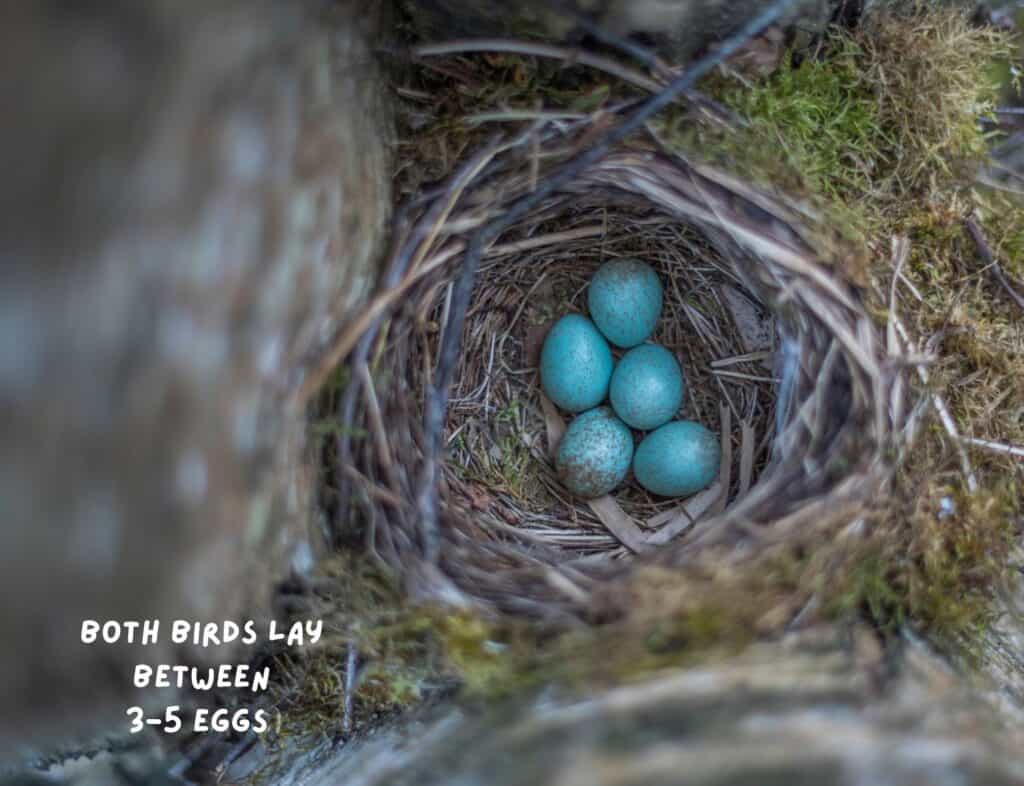
There are a couple of notable differences, however, between the birds. The first is that the Mistle Thrush will breed much earlier than the Song Thrush, sometimes as early as February. This may help you determine which nest you find in your tree. The other is that the Song Thrush may try for a third brood despite breeding later if they feel it is viable. This can all depend on the length of the season and food availability.
Have You Seen A Different Species Instead?
Another thing that you need to be aware of when looking out for different thrush species is that there are other similar birds. The thrush is part of the Turdus genus and there are other species from this genus in the UK. This includes the Blackbird, Redwing, Fieldfare, and Ringed Ousel.
There is the chance that you may see one of these and mistake it for a Song or Mistle Thrush. This is highly unlikely with the Ringed Ousel as this is an upland bird that is rare and a bit lost in a suburban garden. The male does look a lot like a blackbird, just with a notable ring of white by its neck. However, there are greater similarities with some more regular species closer to home. There you face one of two potential problems.
Song Thrush, Blackbird, Or Redwing?
You might see a more common juvenile blackbird – brown and rather speckly – and think you have just seen a less common thrush. However, there is also the risk of seeing something a lot rarer and failing to mark it down correctly because you assumed it was a thrush.
For example, you may spot Redwing visiting your garden or a nearby park in late winter. They like to feed on Rowan berries and other fruit after their long migratory flight. These thrush-like birds have a strong eye stripe and a noticeable red patch under the wing in flight. They also flock together in trees.
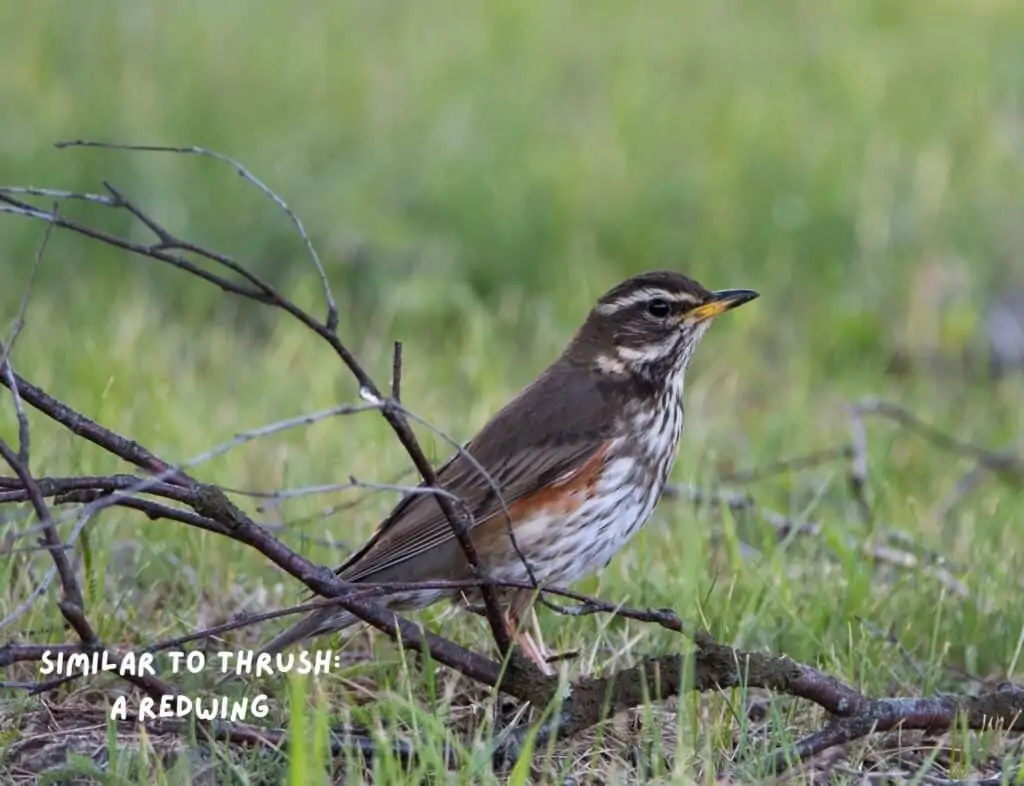
Mistle Thrush Or Fieldfare?
Alternatively, you might think you have seen a Mistle Thrush when in fact, it was the rarer Fieldfare migrant. This bird is a similar size and shape, but the blue markings are much more pronounced. This all shows that it always helps to do a double-take when watching your local birds.
Which Thrush Are You Most Likely To See In Your Garden?
The good news for all avid birdwatchers is that both the song and Mistle Thrush will appear in gardens. However, it is more likely that you will see a Song Thrush because of their feeding behaviour. They may emerge from shrubs and grasses to pick at fallen fruit or take scraps underneath a feeder. But, it may not be long until your local Blackbird sees it off. It is also a good idea to look out for signs of crushed snail shells where a Song Thrush may have had a good feast.
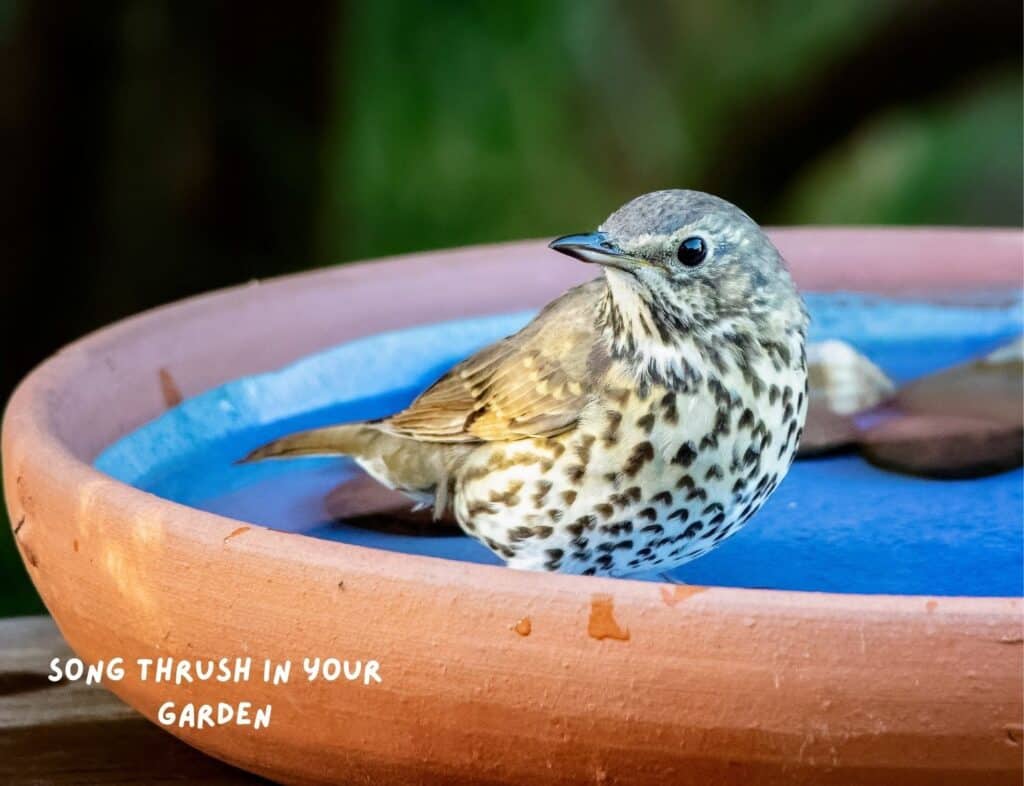
This doesn’t mean that you can’t see Mistle Thrushes in your garden. It all depends on the food you have on offer. If you are especially keen to bring them in and maybe hear that song during a storm. You could try growing mistletoe. Some gardeners aren’t too keen on it because it is a parasitic species, but the birds love it and you can always bring it inside for Christmas.
Otherwise, make sure to make your garden as thrush-friendly as possible with an array of berries, food at ground level, and enough cover. Don’t be in a hurry to clean up fallen fruit, as many species will take advantage of it in winter.
Telling The Difference Between The Song And Mistle Thrush.
As you can see, there are lots of similarities and differences between the Song Thrush and Mistle Thrush. Don’t be disheartened if you can’t tell straight away or get it wrong. Enjoy the chance to watch the birds for as long as you can and make a note of their traits. You may realise that you now have a Mistle Thrush visiting the garden as well as a Song Thrush. Or, you may find you have a rarer migrant in your area.
Remember to pay attention to the colour of the plumage on the back of the bird and its general behaviour. If it is brown, going after snails on the ground, and wary of the Blackbirds, you have a Song Thrush. If it is more grey in tone, bolder and after your berries, it is a Mistle Thrush.
See Also
- How long do magpies live?: Australia and UK!
- Parakeets In The U.K. – How Did They Get Here?
- When do blue tits nest?
- Where Do Kestrels Nest In the UK?
- The difference between female and male blackbirds
